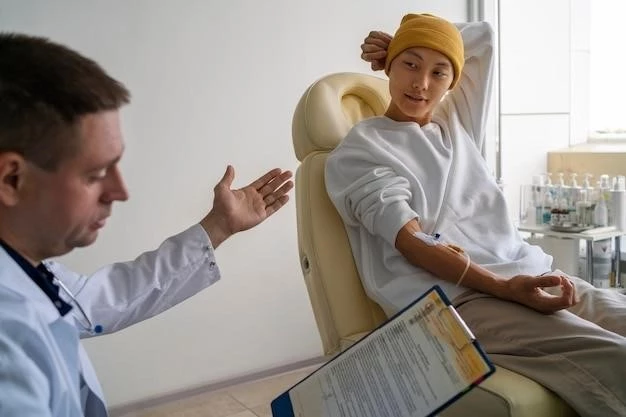Causes of Acquired Ichthyosis
Acquired Ichthyosis can be triggered by underlying conditions or external factors.
Understanding the Pathophysiology
Acquired Ichthyosis is characterized by abnormal skin cell growth and shedding‚ leading to dry‚ scaly skin. It is often associated with systemic diseases that affect lipid metabolism or cause inflammation‚ disrupting skin barrier function.
Common Triggers and Risk Factors
Acquired Ichthyosis can be triggered by factors such as medications‚ infections‚ malignancies‚ or endocrine disorders. Risk factors include age‚ genetic predispositions‚ and environmental conditions like cold weather or low humidity.
Symptoms and Diagnosis of Acquired Ichthyosis
Acquired Ichthyosis presents with dry‚ scaly skin that may be itchy or thickened.
Recognizing Common Symptoms
The symptoms of Acquired Ichthyosis often include persistent dryness‚ scaling‚ and roughness of the skin‚ particularly on the legs‚ arms‚ and trunk. It may also cause skin thickening and itchiness.
Diagnostic Procedures and Tests
Diagnosis of Acquired Ichthyosis involves a thorough examination of the skin and medical history review. Skin biopsies‚ blood tests‚ and genetic analysis may also be performed to confirm the condition and identify any underlying causes.
Treatment Options for Acquired Ichthyosis
Treatment strategies primarily focus on hydrating the skin and managing symptoms.
Topical Therapies
Topical treatments such as emollients‚ keratolytics‚ and retinoids are commonly used to soften and exfoliate the skin in Acquired Ichthyosis. Regular application of moisturizers helps improve skin hydration and reduce scaling.
Systemic Medications
In severe cases of Acquired Ichthyosis‚ systemic medications like oral retinoids may be prescribed to target the underlying causes and improve skin condition. Close monitoring is essential due to potential side effects and interactions.
Advanced Treatments like Phototherapy
Phototherapy‚ including UVB light therapy or PUVA (psoralen plus UVA) treatment‚ may be recommended for Acquired Ichthyosis to reduce scaling and improve skin texture. These advanced therapies require careful monitoring and should be administered by dermatology specialists.
Management of Acquired Ichthyosis
Effective management involves comprehensive dermatological care and regular follow-ups.
Dermatological Care and Follow-ups
Patient care for Acquired Ichthyosis includes regular skin evaluations‚ medication adjustments‚ and monitoring for any complications. Dermatologists play a crucial role in providing tailored treatment plans and addressing individual skin needs.
Psychological Support and Counseling
Psychological support is vital for individuals with Acquired Ichthyosis. Counseling helps cope with emotional impact‚ body image concerns‚ and adaptation to long-term management. Mental health professionals provide valuable support and strategies for resilience.

Lifestyle Changes for Acquired Ichthyosis
Prioritize a skincare regimen and consider dietary modifications for skin health.
Importance of Skincare Regimen
A consistent skincare routine with gentle cleansers‚ moisturizers‚ and sun protection is crucial in managing Acquired Ichthyosis. Proper hydration and protective measures help maintain skin barrier function and alleviate symptoms.
Dietary Modifications for Skin Health
Incorporating foods rich in essential fatty acids‚ vitamins‚ and antioxidants can support skin health in Acquired Ichthyosis. Balanced nutrition with adequate hydration promotes skin moisture and resilience‚ aiding in symptom management.
Research Updates on Acquired Ichthyosis
Stay informed about the latest breakthroughs and ongoing studies in Acquired Ichthyosis.
Recent Breakthroughs in Treatment Approaches
Exciting advancements in Acquired Ichthyosis treatment include novel drug therapies and targeted interventions that show promise in improving skin symptoms and addressing underlying pathophysiology. These developments offer hope for more effective management.
Ongoing Studies and Future Prospects
Current research focuses on understanding the genetic basis of Acquired Ichthyosis and exploring innovative treatment modalities. Future prospects may include personalized therapies and targeted interventions based on genetic profiling‚ highlighting a shift towards precision medicine in managing the condition.
Acquired Ichthyosis in Children
Explore unique considerations and tailored treatment approaches for pediatric cases.
Unique Considerations in Pediatric Cases
Childhood Acquired Ichthyosis may require specialized care due to developmental factors and impact on quality of life. Pediatric dermatologists focus on gentle treatments and psychological support tailored to children’s needs.
Treatment Modalities for Children
For children with Acquired Ichthyosis‚ treatment may involve milder topical therapies‚ emollients‚ and pediatric-formulated medications. Family involvement‚ pediatrician consultations‚ and age-appropriate skincare regimens are crucial in managing the condition effectively.
Coping Strategies for Acquired Ichthyosis
Embrace psychological coping mechanisms and utilize community support resources.
Psychological Coping Mechanisms
Individuals with Acquired Ichthyosis can benefit from stress-reduction techniques‚ mindfulness practices‚ and seeking professional counseling to manage emotional challenges related to the condition. Developing a positive mindset is key in coping effectively.
Support Groups and Community Resources
Engaging in Acquired Ichthyosis support groups‚ online forums‚ and connecting with local organizations can provide invaluable emotional support‚ shared experiences‚ and access to relevant information and resources. Building a strong support network is essential in navigating challenges and fostering resilience.
